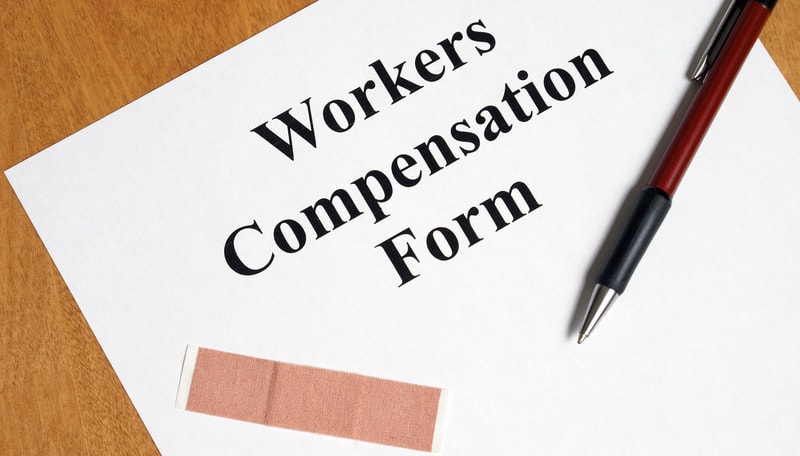Thousands of workers’ compensation claims are filed each year that necessitate medical chart review to determine the genuineness of the claim. The vast majority of injuries reported are commonplace, but some are so unusual or even bizarre that you wonder whether these really happened.
Here are some of those outstanding, weird workers’ compensation claims.
- Injury from Spider Nightmare
This is in 2015, and the claimant is a fire-fighter and an EMT employed by the City of Siloam Springs, Arkansas. Since he worked 24-hour shifts, he was required to stay on premises unless performing a work-related activity or errand. The city provided sleeping arrangements, and encouraged the workers to sleep during night time hours. During one such shift, at around 1:30 or 2:00 in the morning this employee woke up from a nightmare wherein he believed spiders were crawling all over him. In a stupor, he jumped out of his bed and suffered a fracture of the long bone on the outside of his left foot that connects to his little toe. The injury required immediate surgery and this employee filed a workers’ comp claim. However, his claim was challenged on the basis that the injury was not work related. An ALJ (administrative law judge) found that the dream about spiders was idiopathic (of unknown origin) and that caused him to scramble out of bed and injure himself. Sleeping in the employer-provided facilities didn’t increase his risk of harm and the ALJ determined that the claimant failed to prove that his injury was compensable.
Though the worker appealed alleging that the injury was not idiopathic and was compensable, the court noted that the worker has to prove that the injury was an accidental one causing internal/external harm that arises out of and in the course of employment. The appeals court agreed with the judgement of the Arkansas Workers’ Compensation Commission that had substantial evidence to support its decision. They concluded that the employee failed to prove that he sustained a compensable injury. - Man Fractures His Hip on a Vending Machine
This incident occurred in March 2005, and the claimant is a Circuit City store employee who filed a workers’ comp claim after fracturing his hip while trying to shake loose a bag of chips from the break room vending machine. He was trying to help a co-worker dislodge the bag of chips she had purchased from the vending machine. The accident occurred during his working hours.
The plaintiff shook the vending machine from the front and the side, but it was of no use.
He fell on the floor in this effort, and fractured his hip. He was taken to a medical center and X-rays taken revealed that he had an impacted, slightly displaced fracture through the right femoral neck. He had to undergo immediate surgery and bone grafting. The court found that the petitioner’s injury arose out of and in the course of his employment. He was compensated. - Pipefitter Injured from Fall from a Tree
This case involves a pipefitter. The injury occurred during a break time. The claimant and his co-workers were talking about tree climbing and about how they had climbed trees as children. One of the workers climbed about 14 feet up the tree. The claimant then climbed the tree to a height of around 25 feet. Though the co-worker climbed down from the tree safely, the claimant fell while climbing down since the tree snapped. He was in considerable pain and had difficulty breathing. He was taken to a local hospital, and it was found that he had 5 broken ribs and a spinal cord injury. Besides, he had also cracked his right shoulder blade. He had to undergo spinal surgery followed by physical and occupational therapy.
He filed a claim alleging work-related injuries but the employer denied that his injury had occurred within the scope and course of his employment. Though an ALJ ruled in favor of the plaintiff, the employer petitioned the Mississippi Workers’ Compensation Commission for review of the ALJ’s ruling. The Commission reversed the ALJ’s decision finding that the worker’s fall and injuries had not occurred within the scope and in the course of his employment. Though the plaintiff appealed, the Mississippi Court of Appeals agreed with the commission concluding that there was substantial evidence to support the commission’s determination that the plaintiff’s tree climbing was a “complete and serious deviation from his employment and was not within the scope and course of his employment.” - Woman Tripped over Her Dog and Got Injured
An Oregon-based woman, who is a home-based worker, tripped over her small dog when walking from her home to her nearby garage to retrieve some work-related supplies. She filed a claim for her injury but the state’s workers’ compensation board denied the claim saying that her injury did not arise out of her employment because she was not exposed to the risk on account of her employment (she faced the same risk any time she stepped out of her house), and also because the risk arose from her home environment that was outside of the employer’s control.
The appellate court disagreed, and found the employer’s lack of control over the employee’s premises was not material. The employer did not have control over the worker’s dog, but had control over whether the worker worked away from the employer’s premises. Therefore, the risks or hazards of the home premises that the worker encountered in connection with the performance of her work were indeed hazards of the employment. Since there had been no determination regarding whether the injuries actually occurred in the course of her employment, the case was remanded. - Employee awarded $360,000 Verdict for Fake Robbery Enacted by Employer
The woman (plaintiff) was approached by a man wearing sunglasses and a ski mask, who slammed down a paper bag on the counter, and gave her a handwritten note saying that he had a gun, asking her to put the money in the bag. The plaintiff reached for a silent alarm but the man pounded on the counter and pointed to the threatening message. She gave the man the money but was shocked and hysteric after the man left. This incident was actually staged by the employer as a security exercise, and the robber was actually the employer’s district quality control manager. The plaintiff however, filed a claim saying she was assaulted and sustained emotional distress as a result of this incident. The jury verdict in this case was $360,000 in damages, but a California trial court ordered a new trial. However, the California appellate court maintained that there was sufficient evidence to support the jury’s findings. - Pizza Deliverer Injured in Squabble with Panhandler
An Iowa pizza deliverer sustained a punctured lung when he became involved in a fight with a panhandler who was being chased out of the pizza establishment by several other employees. The employer argued that the injuries were sustained at some distance from the pizza establishment and that they originated from the worker’s desire to get into a fight. The appellate court observed that the commissioner had considered the worker’s version of the incident more convincing. The evidence supported the fact that the injuries arose out of and in the course of employment and the squabble was not based on any personal bitterness on the part of the employee. This workers’ compensation claim was found compensable by the court. - Worker Injured by Falling upon Concrete Slab
A Longshore worker prior to and during his work day consumed a considerable amount of alcohol. He decided to relieve himself over the bull rail of his employer’s facility and while doing so fell over the rail on to a concrete and steel ledge around 6 feet below, and got injured. He claimed that since he hit the concrete surface rather than the river or a featherbed, his injury was not “solely” caused by his intoxication. His accident may have been due to intoxication but the injury was caused by hitting the concrete and metal slab. In this federal case, the Ninth Circuit Panel disagreed. They noted that after the incident, the worker was taken to a hospital where tests revealed that his blood alcohol level was .25, more than 3 times the legal limit for operating a motor vehicle. He also tested positive for cannabis ingestion. The Panel maintained that the “legal cause” of the injury was intoxication, irrespective of the surface material of the landing on which the plaintiff fell. Accordingly, the Ninth Circuit Court denied review of a Benefits Review Board decision that had initially denied benefits to the Longshore worker.
Though the above instances may bring a smile on your face, injuries are serious. They may cost workers their lives and have serious implications for their families. Workers’ compensation attorneys handle many such cases and to determine the validity of the claim they may utilize the services of a medical chart review company. Injuries could range from a simple scratch or bruise to a fractured bone or even death. Employers should take all safety measures possible to avoid workplace injuries and treat employees as they would want to be treated after an on-the-job injury.




